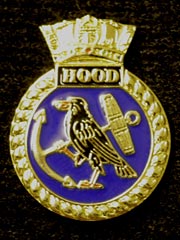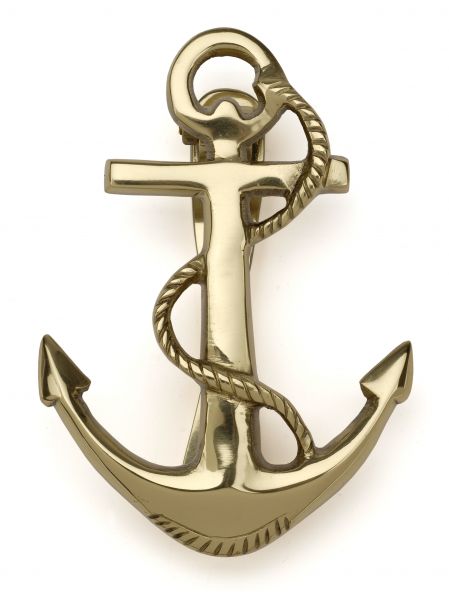THE MIGHTY HOOD

Some ships are ledgendary. So much more than mere metal and gunpowder. Some of them, by their beauty and power, became the very embodiment of Empire. Everything that was great and good about British sea power. So it was with HMS Hood.


 Actually, she wasn't a Battleship in the strictest sense. HMS Hood was a battle cruiser. Battlecruisers were generally as large and costly as battleships of the same generation, often using the same large-calibre main armament, but they traded off armour or firepower for higher speed. The earliest battlecruisers carried significantly less armour than the equivalent battleship, meaning they were not intended to stand up against the guns they themselves carried. Thus ships of this type could inflict much more punishment than they could absorb.
Actually, she wasn't a Battleship in the strictest sense. HMS Hood was a battle cruiser. Battlecruisers were generally as large and costly as battleships of the same generation, often using the same large-calibre main armament, but they traded off armour or firepower for higher speed. The earliest battlecruisers carried significantly less armour than the equivalent battleship, meaning they were not intended to stand up against the guns they themselves carried. Thus ships of this type could inflict much more punishment than they could absorb.
The following is an extract from Ludovic Kennedy's excellent book 'Pursuit'. It describes the mighty HOOD so beautifully; and far better than I'm able.
She was an old lady now, one of the oldest in the Navy, laid down in 1916 in the Clydebank yards of John Brown, who later built the great Queens, named after a family who had given the Navy four famous admirals, Lord Hood who helped Rodney defeat the French in the West Indies in the eighteenth century, his brother Lord Bridport who was with Howe at the Glorious First of June, Sam Hood who helped Nelson win the battle of the Nile, Horace Hood killed at Jutland when his flagship Invincible blew up.
She was launched by his widow, Lady Hood, in August 1918, just three months before the Armistice, the biggest warship ever built, longer even that Bismarck (860 feet as compared to 828) though narrower in the beam, with - like Bismarck - eight fifteen inch guns mounted in pairs in four turrets. Her maximum speed of 32 knots made her the fastest warship of her size in the world, going flat out it took a ton of oil to drive her half a mile.
She was a beautiful ship, elegant and symmetrical like Bismarck, yet dignified and restrained, without the aggressive sweep of Bismarck's lines or the massiveness that spoke of held-back power. But she had one great defect, a lack of armour on her upper decks. Hood had been laid down before Jutland where three British battle cruisers were destroyed by German shells which, fired at long range, had plunged vertically through the lightly protected decks, exploding inside. All big ships built after Jutland had strengthened armour.
Hood's armour was strengthened on her sides but not on her decks: they were to be her Achilles heel.



More from Kennedy's 'Pursuit'...
Between the wars, when a quarter of the globe was still coloured red for Britain, the Hood showed the flag, as they used to say, to the Empire and the world. She went on cruises to Scandinavia and South America, to the Mediterranean and the Pacific, to the old world and the new. Her 1923-24 world tour, in company with HMS Repulse and five cruisers, was described as "the most successful cruise by a squadron of warships in the history of sea-power".
They visited South Africa, Zanzibar, Ceylon, Singapore, Australia, New Zealand, the Pacific Islands, San Francisco, the Panama Canal, Jamaica, Canada, Newfoundland. Their arrival anywhere caused huge crowds to gather, filled the pages of the local press. A girl in Melbourne noted: "Every road and pathway was thick, and many families were making a day of it, taking out all the children and hampers of food and bottles of beer. The Bay was dotted with sailing boats. The mist lifted to reveal Hood and her consorts coming in. It was a wonderful sight - something I shall never forget, everyone cheering and the kids running up and down and the sirens of all the ships in the harbour going off".
In Hood's eleven-month voyage millions of people saw her, hundreds of thousands came aboard. She was a unique blend of strength and beauty, the outward and visible manifestation of sea-power. Looking at her one understood what Rule Britannia meant. Her visitors fingered the brasswork and fondled the guns, walked the long decks and climbed the superstructure, took snapshots galore, stunned by the scale and wonder of it all. Her pulibc relations too were immaculate. Finding in Honolulu that a boy scout chosen to represent Hawaii at an assembly in Copenhagen had missed the steamer to the United States, Hood's Admiral gave him free passage on the boy's mess deck, and won a garland from the American press. When she arrived in San Francisco, the mayor, bowled over by her size and beauty, said: We surrender our city unto you. We capitulate".
Such was the nature, spirit and beauty of HMS Hood.





Kennedy again.....
But at least one shell of that broadside made no splash: it came plunging down like a rocket, hit the old ship fair and square between centre and stern, sliced its way through steel and wood, pierced the deck that should have been strengthened and never was, penetrated to the ship's vitals deep below the water line, exploded, touched off the 4 inch magazine which in turn touched off the after 15 inch magazine. Before the eyes of the horrified British and incredulous Germans a huge column of flame leapt up from Hood's centre.
The smoke was clearing to show Hood with a broken back, in two pieces, bow and stern pointing towards the sky. As he watched, he saw the two forward turrets of Hood suddenly spit out a final salvo: it was an accident, the circuits must have been closed at the moment she was struck, but to her enemies it seemed a last defiant and courageous gesture.


HMS HOOD, pride of the Royal Navy, was struck by a fatal shell fired from the Bismarck at 0601 hours on the morning of today, May 24th, sixty nine years ago. She sank in three minutes.
Of her 1418 men and boys aboard, there were 3 survivors.



No comments:
Post a Comment